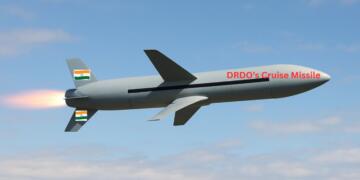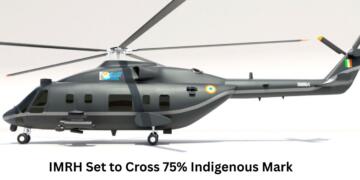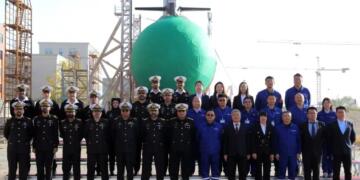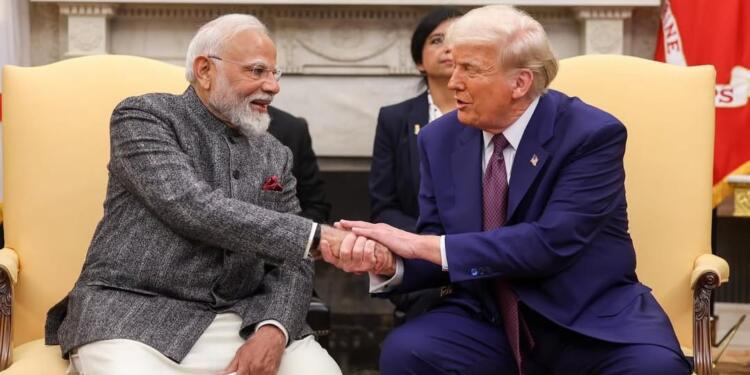After, one of the most successful discussions between Indian Prime Minister Narendra Modi and US President Donald Trump in Washington, both countries are entering in a new era of strategic partnership. US-India COMPACT** (Catalyzing Opportunities for Military Partnership, Accelerated Commerce & Technology for the 21st Century) is a groundbreaking initiative aimed at reshaping defence collaboration between the two nations. This agreement, coupled with the proposed 10-year defence framework, is not just about buying and selling weapons but also emphasises technology transfers, co-production ventures, and strategic alignment in defence and security. US has been reluctant on those issues.
India will procure and locally produce advanced defence systems from the US, including Javelin anti-tank guided missiles and Stryker infantry combat vehicles among others. The Javelin is a highly effective anti-tank missile system that is capable of being deployed in a variety of combat scenarios. After making a debut in the Iraq war, Javelin has proved to be extremely efficient due to high-explosive anti-tank (HEAT) warhead and fire-and-forget design which allows the user to seek cover immediately after launch. It has been heavily used in Ukraine-Russia war.
On the other hand, the Stryker is a 19-ton, eight-wheeled armored vehicle that provides the Army a family of ten different vehicles on a common chassis. The Stryker comprises two variants – the Infantry Carrier Vehicle (ICV) and the Mobile Gun System (MGS). With robust armor protection, they can run upto 60 miles per hour. Javelin anti-tank guided missiles and Stryker infantry combat vehicles will strengthen India’s ground forces.
Trump administration has also committed to reviewing its policy on supplying fifth-generation fighters, including the F-35 Lightning II, to India. It is single-seat, single-engine, supersonic stealth strike fighters designed for both air superiority and strike missions. It also contains electronic warfare, intelligence, surveillance, and reconnaissance capabilities. The F-35 is widely considered as one of the most advanced stealth fighters in the world. Lockheedmartin describes it as “most advanced node in a 21st Century Security network-centric architecture”. However, many defence and tech experts including Elon Musk have termed it obsolete, which becomes more relevant as world moves towards sixth generation fighter jets.
India needs to bargain for its share in Next Generation Air Dominance (NGAD) program of US Air Force. It is designed to produce sixth generation fighter jets to replace F-35 and other fifth generation aircrafts. In addition to fighter jets, the agreement also includes collaboration on maritime systems. India is set to receive six more P-8I Poseidon aircraft. The P-8I is a state-of-the-art maritime patrol aircraft that has already proven its worth in the Indian Navy’s operations.
The agreement also includes collaborations on unmanned surface vehicles (USVs) and autonomous underwater vehicles (AUVs). Beyond procurement, the agreement also paves the way for joint production of defence equipment in India. For instance, the Autonomous Systems Industry Alliance (ASIA) will focus on underwater domain awareness technologies with a special outlook on co-development and co-production of maritime drones and counter-drone systems.
This initiative will witness US companies like Thayer Mahan, L3 Harris, and Anduril collaborating with Indian firms such as Mahindra, Bharat Electronics and Bharat Dynamics, among others. Another major breakthrough in the agreement is the review of the International Traffic in Arms Regulations (ITAR). ITAR has proven to be a barrier in India’s accessibility to critical US military technology. If the Trump administration stricks to its promise then the new era will witness streamlined technology transfers, spare parts supplies, and the maintenance of US-origin equipment in India.
The agreement is focussed on comprehensive approach to modern warfare foe which also collaboration in space defence, missile defence, and cyber technologies will be key. One of the most significant outcomes of the meeting is the initiation of discussions on a Reciprocal Defence Procurement (RDP) agreement. This agreement aims to align the defence procurement systems of both countries, enabling the reciprocal supply of defence goods and services.
The RDP will focus on streamlining procurement processes, reducing bureaucratic hurdles (specially in India), and promote efficiency in defence trade. It will also facilitate the transfer of advanced technologies, enabling India to locally produce and maintain US-supplied defence systems. The agreement will simplify the procurement process, allowing both nations to access each other’s defence markets without unnecessary delays.
For India, this would translate into easier access to American-origin military technologies, while for the US, it will make it easier for sourcing critical components from India’s exponentially growing defence manufacturing sector. US will benefit from cost effectiveness of Indian industry. The US already has similar agreements with 28 partner countries, such as the United Kingdom, Germany, and Japan. India’s inclusion in this framework would place it among the world’s most trusted defence partners of the US.
The US is not only a major supplier of defence equipment to India but also a significant buyer of Indian defence products. In fact, the US accounts for nearly 50 percent of India’s total defence exports, making it the largest importer of Indian defence goods. The US primarily imports aircraft and helicopter parts manufactured by Indian firms for global defence majors like Lockheed Martin and Boeing among others. Other exports include software, electronic equipment, and precision-engineered components among others.
According to a report by The Economic Times, Boeing’s joint venture with Tata Group, Tata Boeing Aerospace Ltd (TBAL) in Hyderabad manufactures aero-structures for Boeing’s AH-64 Apache helicopter. It has supplied over 200 Apache fuselages and other aircraft components. Lockheed Martin’s partnerships with Tata Advanced Systems Limited (TASL) has resulted in one venture producing over 200 empennages for the C-130J transport aircraft while another has delivered more than 157 cabins for the S-92 helicopter.
These are few examples of burgeoning India’s defence exports, which jumped 2172 percent from $110 million in 2013-14 to over $2.5 billion in 2023-24. It is a result of the Modi government’s concerted efforts to promote defence manufacturing and exports. When the Modi government took office, India was the second biggest defence importer in the world. Defence manufacturing became a key focus of Make in India and Atmanirbhar Bharat. India is making indigenous defence products under three categories: Make-I, Make-II, and Make-III.
The Modi government also focused on loosening bureaucratic control over defence deals and increasing public-private partnerships. Additionally, synergies among the top brass and the modernisation of the armed forces were undertaken on a massive scale. India’s defence industry currently boasts 16 Defence Public Sector Units, 430 firms with licences, along with 16,000 medium and small-scale enterprises. The introduction of the Defence Production and Export Promotion Policy (DPEPP) 2020 and the Strategic Partnership Model has simplified procurement processes and encouraged private sector participation.
Prime Minister Narendra Modi set an ambitious target of achieving $5 billion in defence exports by 2025, driven by a massive turnover of $25 billion in defence manufacturing. The recent surge in exports, which reached ₹21,083 crore in 2023-24, indicates that India is well on its way to achieving the target set by PM Modi.
































